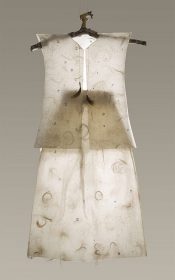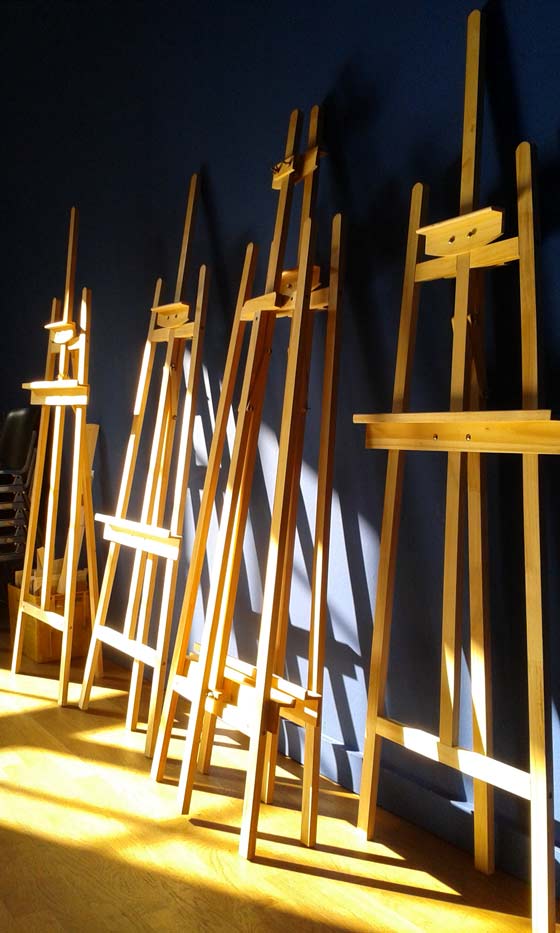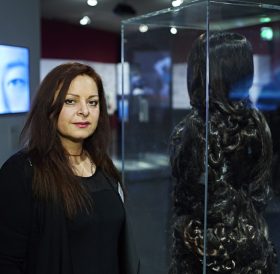Artist Andi Arnovitz Questions Traditional Matrimonial Law

The Dress of the Unfaithful Wife by Andi LaVine Arnovitz, 2009; photo: Avshlom Avital
In our current exhibition, Cherchez la femme, a transparent dress seems to reveal everything. The Israeli-American artist Andi LaVine Arnovitz created a delicate work of art from washi paper, hair, and Hebrew letters. Locks of hair adorn the paper dress, hinting at the beauty of its wearer. But how to interpret the other components, the grime and coarse body hair?
The individually placed letters are the key to understanding this piece. They point to the biblical ritual described in the Torah, Numbers 5: 11–31, on which this work is based: → continue reading

The Blue Room – things remain exciting! Photo: Barbara Rösch
A boat made of wood and painted canvas strips, a yodeling flamingo, a photograph of turquoise tiles from a Berlin subway station, two cake replicas, metamorphosed Ugaritic letters, a fisherman, a play. What do they all have to do with each other? They are all going to be exhibited at the Jewish Museum Berlin this summer.
And what do a car-body painter, well known in his native Iraq, an architect from Syria, a young Egyptian chef, a painter from the former Soviet Union, a Greek doctoral student, and a social worker from right here in Berlin have in common? They will all be exhibiting at the Jewish Museum Berlin this summer.
On July 12 a group exhibition entitled The Blue Room opens. It will be the high point of a meeting project that I have been supervising since January. → continue reading
Of Persian fairy tales and female self-determination

Artist Mandana Moghaddam standing next to her sculpture Chelgis I in the exhibition Cherchez la femme. Wig, Burqa, Wimple; Jewish Museum Berlin, photo: Yves Sucksdorff
In the course of the new exhibition Cherchez la femme – which deals with the covering of women within the idea of the monotheism of the three leading religions – we spoke with Iranian artist Mandana Moghaddam. Her artwork Chelgis (pronounced “Gelgis”) contributes to the concept of the exhibition in an impressive way and further stimulates the viewers’ own contemplation on the subject. Just in time for the exhibition’s opening we conducted a short interview with Mandana Moghaddam:
Dear Ms. Moghaddam, would you tell us a little bit about your artwork and the story of Chelgis?
I began my work by thinking of contemporary womens’ issues, examining them from different angles. When I drew the first sketch I saw the story of Chelgis – which means “40 braids” – right in front of me. → continue reading


